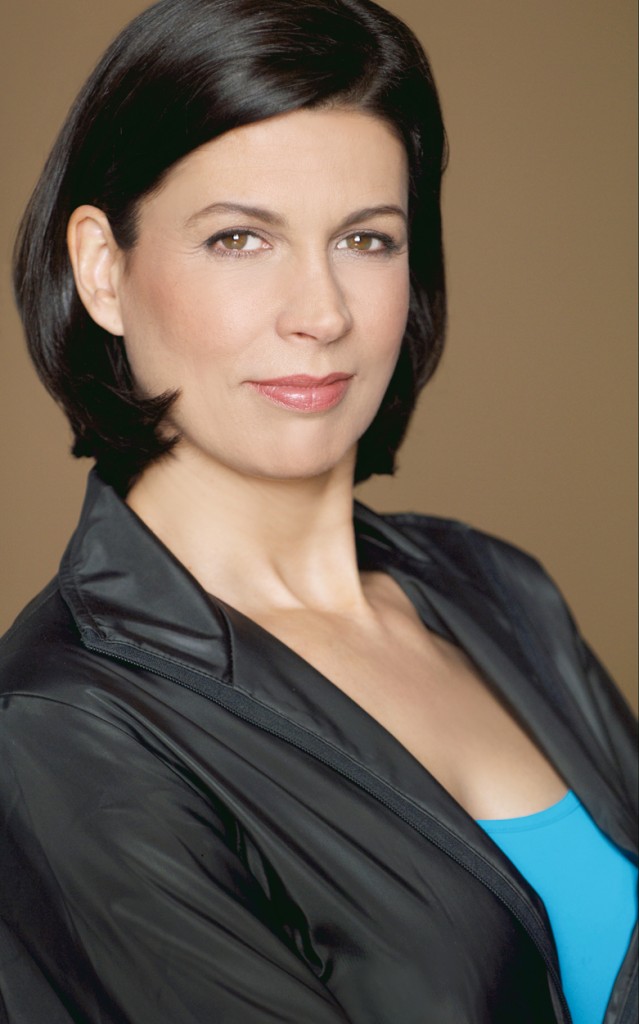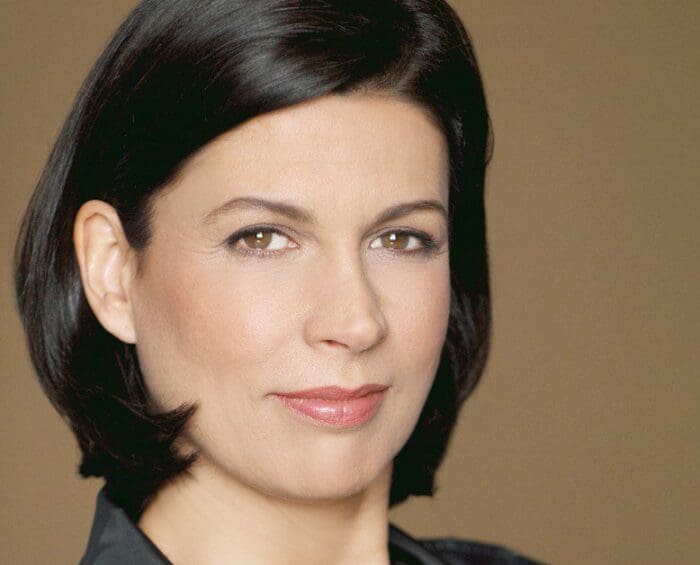 Before we announce the winners of the 2013 My Theatre Awards, we’re proud to present our annual Nominee Interview Series.
Before we announce the winners of the 2013 My Theatre Awards, we’re proud to present our annual Nominee Interview Series.
I’ve been thinking about it for months and I’ve decided that I’m not overstating it when I say that FeverGraph’s production of Look Back in Anger was one of the most profound theatrical experiences I’ve had in my years as a critic. It was an extraordinary production- inventive, thoughtful, vibrant, challenging- all the things that good contemporary theatre should be and traditional domestic drama often fails to be.
A huge portion of that production’s success belongs to its director Anita La Selva who conceptualized the bold reinterpretation (and daring cut) of Osbourne’s text and guided a superb ensemble of four actors through an unforgettable 90-minute journey, earning her a Best Director nod for a Best Production nominee.
 Can you remember your first experience with theatre?
Can you remember your first experience with theatre?
My first significant experience with theatre happened when I was 14 years old. It was at the Stratford Festival and I had just gotten a part time summer job at the bookstall selling programs and souvenirs. Being an employee, I was entitled to see some shows for free if there were seats. So one hot summer afternoon I decided to go and see Uncle Vanya – not knowing the slightest thing about the play or Chekhov’s world. The experience that ensued was to affect my thinking and my life’s path as an artist forever. I thought how could something on stage hit such a profound core emotional note inside me? How could something taking place in Russia in the 1800’s have the ability to affect me so deeply here and now in a different century? I had never seen actors drop in to such emotional depths – I laughed, I cried and I walked out of the theatre absolutely stunned knowing that my future lay in this direction. !
Do you have any dream projects?
I have too many to count! One I would like to tackle is an outdoor all female production of Shakespeare’s Henry VI cycle.
What’s your favourite production you’ve ever worked on?
I think Look Back in Anger has to be up there in my favourites. The reason being that oftentimes a director has to come in and direct a show with a lot of restrictions- ie time, money or having to adapt to the theatre/producer‘s mandate or vision. With Look Back in Anger I was invited to bring in something innovative and new that I wanted to experiment with and so I was given a carte blanche with my creativity – I just had to do it on a super low budget.
How did you get involved with FeverGraph and Look Back in Anger?
FeverGraph’s two producers, Tosha Doiron and Zoe Sweet, were classmates of mine in the York University MFA program several years ago. They were in the Acting Program and I was in the Directing, so I had the opportunity to work with them both several times throughout the program. One of my areas of focus as a director is to take on older established texts and re-envision and reinterpret them for contemporary audiences. Knowing this was of key interest to me and already being familiar with my aesthetic as an artist, they invited me to take on the project.
How do you start preparing to direct a text?
First of all, I read the text multiple times- each read reveals something new to me. Then I begin to research the period – the socio-political time in which it was written. I also look at the psychological texture of the piece and research anything that may be connected to or of significance to any of the characters or situation. I then begin to visualize and seek out images, sound, textures, etc that inspire me. I often have lots of images in a folder that may or may not be connected and may or may not end up in the play, but that offer me inspiration – and as always – help me make connections and trigger new ideas throughout the process. Then I ask myself what kind of world am I working in? Meaning is it a text-driven naturalistic world, an image-driven piece, a movement piece, etc and then go from there.
Your production looked wildly different from any other Look Back in Anger. How did the concept for the movement pieces and pre-recorded dialogue come about?
I knew that FeverGraph’s mandate is to incorporate movement in to all of their pieces so I started with that as I envisioned the piece. I was intrigued by how this play could be so text-driven and offer so little about what was really going on inside each of the supporting characters’ minds. I became fascinated by what was unspoken – what was underneath. Jimmy rants and raves throughout the play and the other characters often say nothing. Thus began the idea to explore what was unsaid – what was trapped inside – so in essence the concept of the movement and recorded dialogue became an outlet for the emotional and psychological states of each character. I was also interested in the idea of repetition and the effect words can have on us after they have been spoken. I wanted to play with hearing text and then really seeing what was happening on a deeper emotional level underneath it.
Tell me about the set and props. Why was the newspaper motif so important to your concept?
One of the things that struck me about the play was the veracity of Jimmy’s desire for knowledge and information– despite his inertia to do anything with himself. This world is flooded with newspapers and information that triggers the characters’ sense of malaise and frustration. Jimmy is something of a Renaissance man – even in the play there is a reference to him as being someone that walked out of the French Revolution – a time of pamphlets, protests and raging against the system. I wanted to maintain that connection to the past but bring him into the present. Newspapers also suggest a sense of being held back – of not moving forward into the technological age. There is a very visceral quality to Osborne’s play that I feel would have been lost had I transferred everything to computers, tablets and x-box. I wanted to keep the play rooted in something tactile and newspapers were the obvious choice for me. In addition, they served to tie in themes of stasis, hording, poverty and making do with what is available. I also wanted to work with a non-realistic or floating set – to give the impression that these people were just living with what was around them – so that the set could transform and move according to the psychological journeys of the characters and the scenes.
What were some of the rewards and demands of such an intimate space?
What I loved about the space was that it allowed me to create a “narrow strip of hell” as Osborne writes in the play. I really wanted the audience to feel as if they were in the room witnessing events as they unfolded. I envisioned an Alley Style space from the very beginning, not wanting a traditional 4th wall. The space really dictated the blocking which served us well in those moments of Jimmy raging against the other three as well as assisting the actors with exploring feelings of claustrophobia and being caged. On the other hand, we had some challenges lighting the space – because it is an art gallery and has no grid. Despite the talent and efforts of our amazing lighting designer Melissa Joakim, we still were not quite able to get the desired effects of isolating actors in the space as we had originally envisioned. We also had to be super careful of not crashing into the audience and actors often had to compensate for that. We spent many hours rehearsing the fight sequences because either an actor or an ironing board ran the risk of flying smack into the chairs.
Walk us through your casting process.
Interestingly, I did not cast the show. The producers called me with the show already cast. Initially I was called in to do a one off workshop with them during their early stages when they were in negotiations with a different director. I guess things didn’t work out on that front so they called me a few weeks later inviting me to direct the show with the cast fully in place. Having worked with the four actors already in workshop and knowing the two women quite well from my York days, I felt it was a good fit and took on the project.
How did your vision change in the rehearsal room with the actors?
As a director I always like to see what the actors bring to the table. I introduced the concept of the newspapers through an improvisation and wanted to see if they took to it or not. Luckily everyone found some fantastic connections and things to work with so the concept stayed. Had they not connected to the newspapers, I might have not used them – That is how I work as a director. I come in with lots of offers and see how the actors take to them. The core vision for Look Back in Anger did not really change when it came to working in the room – It was more a matter of what variations happened – or which pieces of text worked best with the recorded dialogue – or when and where a gesture happened. These decisions I make in the room with the actors – so for me it was key to establish the vision and then be flexible in the room as to how that manifests with the actors in the explorations and rehearsals.
Beyond the presentation style and modernization, where did your interpretation of the text depart from more standard productions?
I made a lot of cuts to the original text. I did not add anything but cut out a lot of references to the Edwardian era. I felt that a modern Canadian audience would have little or no connection to Edwardian England and British rule in India. Hence the scene when Allison’s father, the Colonel, comes to pick her up and take her home was cut down to a voice over recording accompanied by a movement sequence. I felt that watching a whole scene about the Colonel musing on how times have changed would distract us from the key action at hand. Some of Jimmy’s rants about specific things going on in England at the time were also cut. What I did was really pare down the script to the essence of the relationships between the characters. Context was not as important as the content of the emotional landscape. Hence I feel it was easier to modernize the script. I did not have to worry about trying to make a speech about colonial India work.
Two of your actors- Tosha Doiron and Eli Ham- received Best Actor nominations for their roles as Allison and Jimmy. What were some of the most important conversations you had with them about the development of those performances?
We talked a lot about what drives each of them. What drives them to stay or go. Why they are together. What they need, what their obstacles are – what keeps holding them back. We talked a lot about family – and socio-economic background – especially because we set it in present day Ontario. We say we don’t have a class system in Canada, but in fact we do – we just don’t talk about it. So we talked a lot about the role each character’s background and family played in creating/influencing the person they are at this moment in the play.
Do you have a favourite moment in the production?
I can’t say I do. There are many moments I love and I am in awe of how all four actors were able to dive in so deep and sustain all that emotional insanity for 90 minutes every show.
What are you doing now/ what’s your next project?
Right now I am creating a new piece as part of a residency I have with Aluna Theatre. I am conceiving and directing a new piece with an ensemble of women. It is a human rights issue and has to do with execution. It is in its very early stages so I unfortunately can’t say much more at this point. I am also directing Tracy Erin Smith’s new solo piece, which will premiere at the Toronto Fringe Festival in July. I am also acting in a Roseneath production this March /April.
Do you have anything you’d like to add?
Thank you for these great questions. It was really good to reflect more about the piece now with some distance. And thank you to Kelly and to the staff at My Entertainment World for nominating me. I am so delightedly surprised and grateful!

